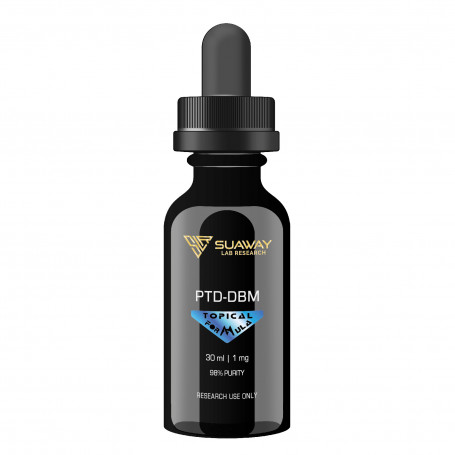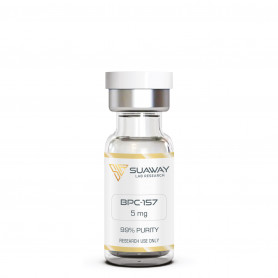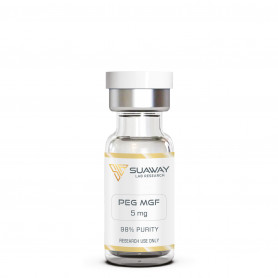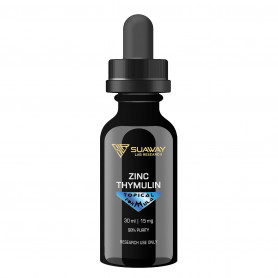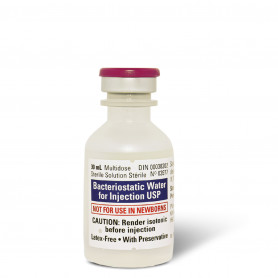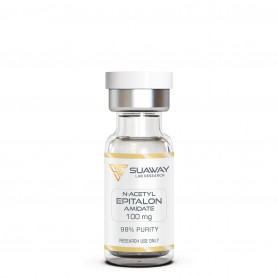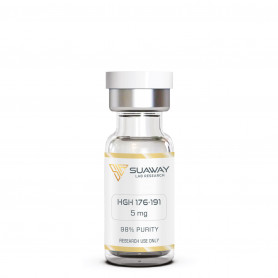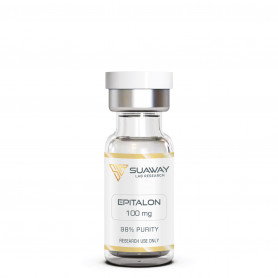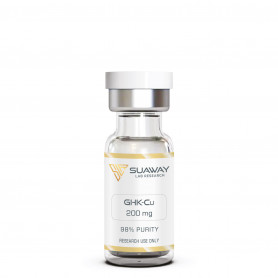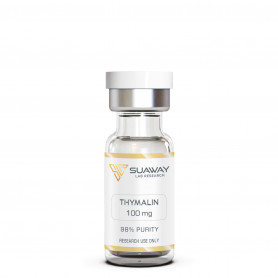PTD-DBM - 30ml/1mg
PTD-DBM is a safe and effective treatment to regrow a full head of hair in both men and women. It shows the following benefits:
- Prevents pattern baldness - the most common type of hair loss in both men and women
- Stimulates new hair follicles
- Accelerated hair regrowth
- New follicle development in areas of baldness
- Treats androgenetic alopecia
FRESHLY PREPARED SOLUTION
Beschreibung
STRUCTURE
Sequence: RRRRRRRRGGGGRKTGHQICKFRKC
Molecular Formula: C124H22N61O28S2
Peptide purity: Greater than 98%
Other details: No TFA Salt, No Mannitol
Storage: This product must be stored at 4°C. Not suitable for freezing.
PTD-DBM is for topical use only
DESCRIPTION
PTD-DBM which is short for Protein transduction domain (PTD)-Dvl-binding motif (DBM).
In simple terms, it is a follicle regeneration treatment. More specifically, it is a peptide-based topical scalp treatment which inhibits the follicle shrinking action of the body’s hormones and enzymes effectively rescuing the follicle at a stem cell level. Treatment with PTD-DBM both prevents hair loss and promotes the growth of new hair follicles.
Many researchers believe that WNT signaling pathways inside of a cell are responsible for hair follicle development and hair regeneration in humans. These pathways are usually made of proteins and they communicate important cell activity and growth signals to various cells throughout our body.
Professor Choi Kang-yeol of Yonsei University in South Korea and a team of researchers discovered a protein responsible for hair loss in the condition known as androgenetic alopecia. This protein controls hair growth and the researcher developed a new substance that promotes hair regeneration by controlling the function of the protein.
The responsible protein is called CXXC-type zinc finger protein 5 (CXXC5), which acts as a negative regulator on the Wnt/β-catenin pathway, which is linked to hair regeneration and wound healing. When CXXC5 binds with a protein called the Dishevelled protein, it prevents follicle development and hair regrowth. This led to the development of a new biochemical substance, called PTD-DBM, which interferes with this binding process.
In the next set of experiments, the authors evaluated hair regrowth in CXXC5-deficient mice and found that loss of CXXC5 supported the transition from telogen to anagen with increased levels of β-catenin, alkaline phosphatase, and proliferating cell nuclear antigen, again consistent with a WNT-inhibitory function of CXXC5.
Moreover, the treatment of CXXC5 null mice with valproic acid (VPA)—a GSK3β antagonist with some wnt agonist activities—showed synergistic effects on hair regrowth compared with untreated wild-type mice.
For further evaluation, the authors used a specific peptide labeled protein transduction domain-Dvl-binding motif (a competitive inhibitor) that inhibits the binding of CXXC5 to Dvl and found that the cotreatment of protein transduction domain-Dvl-binding motif with Wnt3a or VPA synergistically stimulates DP cell activities and hair regrowth.
Interestingly, Wnt3a induces CXXC5 expression, which subsequently disrupts β-catenin stability, suggesting that CXXC5 functions as a negative feedback regulator of WNT/β-catenin signaling. Finally, the authors examined the interaction of CXXC5 with Dvl in the context of wound-induced hair neogenesis. As seen in normal telogen mice, blocking CXXC5-Dvl interactions promoted hair follicle regeneration and cotreatment of VPA synergistically enhanced wound-induced hair neogenesis activity with significantly augmented expression of Fgf9 and keratin 17 as well as β-catenin, alkaline phosphatase, and proliferating cell nuclear antigen. These results support multiple overlapping roles for CXXC5.
REFERENCES
Soung-Hoon Lee et al., "The Dishevelled-binding protein CXXC5 negatively regulates cutaneous wound healing" [JEM]
H-Y Kin et al.," CXXC5 is a negative-feedback regulator of the Wnt/β-catenin pathway involved in osteoblast differentiation" [PMC]
Soung-Hoon Lee et al., "Targeting of CXXC5 by a Competing Peptide Stimulates Hair Regrowth and Wound-Induced Hair Neogenesis" [ScienceDirect]
DISCLAIMER
This product is intendend for lab research and development use only. These studies are performed outside of the body. This product is not medicines or drugs and has not been approved by the FDA or EMA to prevent, treat or cure any medical condition, ailment or disease. Bodily introduction of any kind into humans or animals is strictly forbidden by law. This product should only be handled by licensed, qualified professionals.
All product information provided on this website is for informational and educational purposes only.

